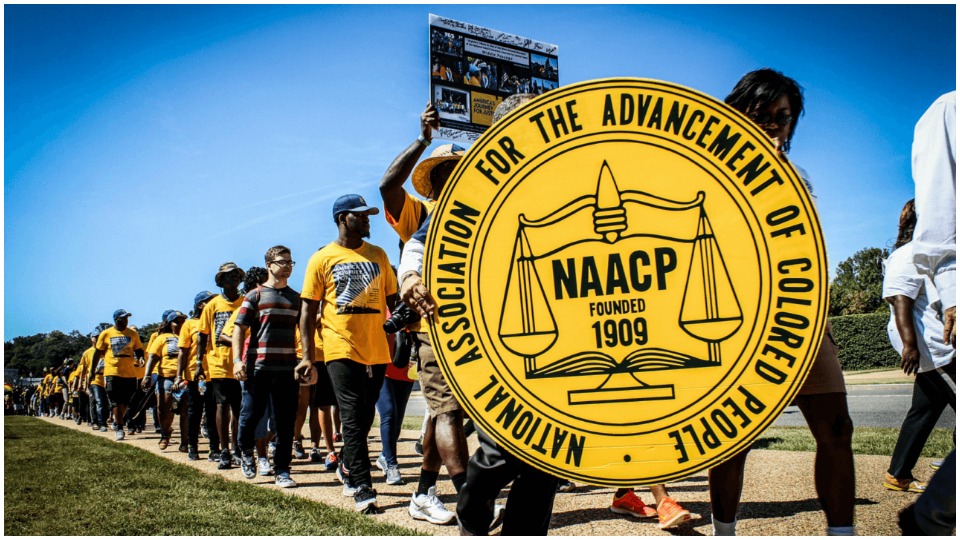
Voting matters.
That simple but evocative sentence could sum up whole epochs of American history. It certainly helps to define what happened in 2016. And the midterm elections of 2018 prove it. As we head into the presidential election season and the fateful date of November 3, 2020, let’s take a look at how Congressmembers shape up on some key issues.
We’re not going to name any names, though. This is an aggregate portrait of a legislature, specifically the 115th Congress, which dates from Jan. 2, 2017, to Jan. 3, 2019.
As a member of the National Association for the Advancement of Colored People (NAACP), I receive their magazine The Crisis—launched (and edited) more than a century ago by one of the NAACP’s founders, the scholar and activist W.E.B. DuBois. The Spring 2019 issue contains a four-page Legislative Report Card listing every Senator and every Representative, compiled by Hilary O. Shelton, director of the NAACP’s Washington Bureau and senior vice president for policy and advocacy. The NAACP has been preparing such reports since 1914. “During that time,” she says, “the first policy position they were graded on was legal lynching.”
During the first two years of the Donald Trump administration, the president enjoyed GOP majorities in both the Senate and the House. The basic outlines of his presidency were made clear, and our elected officials in Washington had the opportunity to vote on his priorities.
Among the issues the NAACP tracked were the following: Their votes on presidential appointments, such as Betsy DeVos for secretary of Education, Jeff Sessions for attorney general, and Brett Kavanaugh for the Supreme Court. There was also a piece of legislation from the Obama administration requiring public school accountability for historically marginalized groups that was rescinded.
Other legislation involved states requiring drug tests for people collecting unemployment benefits, the huge tax “reform” bill, and terminating the individual mandate to purchase health insurance per the Affordable Care Act.
Other bills of interest to the NAACP were the 2018 Farm Bill, which would increase access to healthy food among poorer populations; investment in low-income communities both urban and rural; and providing resources for land-grant universities, including many historically Black colleges. The NAACP supported the First Step Act meant to address the disaster of mass incarceration.
Although a dramatic difference can be seen in how Democrats and Republicans voted, on certain issues there were surprises. “Too often,” Shelton says, “we have members running for office saying they support our agenda, but when we look at how they end up voting it becomes a whole different analysis. In some cases,” she observed, “they vote against every aspiration for our families and our children as we look towards the future.”
I want to focus for a moment on that word “agenda.” Every non-profit or civic organization has its agenda, the things they want to accomplish through their advocacy. I also receive such legislative report cards from other groups I support, dealing with women’s rights, LGBTQ rights, workers’ rights, church-and-state issues, environmental concerns, good governance, and others. Their reports document the same overall trend of extreme polarization between the two main political parties. It turns out that the agenda of the NAACP is a liberal, populist one that benefits not only people of color, but all people in the 99%, and so do the agendas of all the other groups.
The only “agendas” that diverge from benefiting the public are those lobbies of the well-funded right-wing American Legislative Exchange Council (ALEC), the NRA, Big Pharma, the factory farming industry, private prisons, AIPAC, and the like, who represent the 1%, and who exert an overweening influence on public policy through their intensive—and expensive—lobbying. Their impact could be felt in high relief in the 2017-19 Congress, as the numbers show.
In the Senate, the highest scorers supporting the NAACP agenda 100% (that would be a perfect record from each senator) are the states of Connecticut, Hawaii, Maryland, Massachusetts, New York, Rhode Island, Vermont, and Washington. Other states, like California and Illinois, came close with senators voting 100% and 94%, and Delaware voting an even 97%.
At the other end of the spectrum are states such as Alaska (9% and 19%), Arkansas (6% and 13%), Georgia (13% and 9%), Idaho (6% and 9%), and similarly dismal others in that range, finishing up both alphabetically and numerically with Wyoming at an even 3%.
Where the state is represented by both a Democrat (or Independent) and a Republican, the numbers reveal it: For example, Indiana (91% and 13%), Maine (97% and 28%), Missouri (13% and 94%), Nevada (100% and 16%), Wisconsin (100% and 6%), and a couple of others. As they say, voting matters. The effects are felt in every household in America.
An analysis of the House of Representatives shows the same disparity between the two main political parties. Perusing the entire list of 435 representatives, one can see that the numbers range from 100% (these are all Democrats, of course) down to a low of 3%.

Perhaps a more telling way of looking at the House numbers is to indicate the range within each party, given that from district to district the elected officials feel the pull of this or that constituency and diverge somewhat from the party line. Democrats range from a high of 100% to a low of 59%, while Republicans range from a low of 3% to a high of 47%. It should be underlined that even though it appears as if there is a 12 percentage point spread between the Democratic low of 59% and the Republican high of 47%, in reality, the couple of those Democratic lows and that one Republican high are outliers in their parties, with very few others weighing in anywhere near those numbers. Overall, there are almost no numbers in the 30-70% range.
Is there really no difference between these two capitalist parties, as some on the left like to claim (a point also made on social media in fake bots created by the Russians in 2016 targeted at Black voters, aimed at suppressing the vote for Hillary Clinton)? When it comes to judicial appointments, schools, investment in neighborhoods, mass incarceration, and other critical issues, the NAACP might argue otherwise.
Reform legislation may not bring us socialism, and incremental improvement may give people an inch when they really need a yard. But as it has been observed before, a lot of people live on that inch.
Increasing the numbers of voters in 2020, in the face of massive gerrymandering, voter suppression and social media interference, is going to decide the presidency and the Senate, as well as the House and thousands of down-ballot races and referenda in the states, counties and cities. It all matters.
Vote wisely and well.












Comments